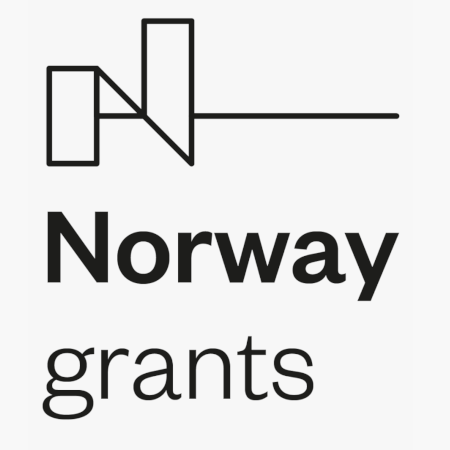This week on the Borderscape Blog, we are discussing “nomes”. If you are not an Egyptologist, it is quite possible you may not have come across this term before! Often times, nomes are simply described as ancient Egypt’s equivalent to “provinces” or “states.” The term is derived from the Greek term nomos, often translated as “custom” or “law.” Nomes were sometimes administered by a nomarch–typically an official something like a provincial governor. The broader contours of this narrative are accurate in later periods, but the reality in earlier periods is far more complex, and has a real impact on how we understand boundaries in ancient Egypt. As Jessica Tomkins’ research has demonstrated, these terms are derived from Greek words used to describe the state of affairs in Egypt during the first millennium BCE, but these terms are often uncritically applied to the much earlier Old Kingdom and Middle Kingdom.[1] The Egyptian word often translated as “nome” is “sepat”, but this term might at times reflect notions of pasturages, fields, or basins as much as it does a provincial administrative unit.[2] Scholars like Émilie Martinet[3] and Hratch Papazian[4] have rigorously analyzed provincial and central administration in the Old Kingdom, leading to much more nuanced interpretations of how power was actually distributed in the Pharaonic state. The work of such researchers has highlighted the importance of actually looking at the titles and roles of Pharaonic officials.
Some Egyptological writing assumes that the entire nome system was present from the earliest days of the Pharaonic state, as early as the 1st Dynasty, but it seems more likely that this system evolved historically, in fits and starts, changing substantially over time. To compare with a modern analogy, the 50 “states” in the USA did not simply emerge with the declaration of independence, but expanded over time. Moreover, the specific rights and governing prerogatives of states or provinces are constantly in flux, and often a source of tension between local and national politicians.
That being said, nomes do appear very early in Pharaonic history. Nomes are mentioned by the reign of Ninetjer,[5] and by the 4th Dynasty, nomes are personified in processions of royal domains during the reign of Sneferu.[6] Incomplete lists appear in Niusserre’s sun temple, as well.[7] By the Middle Kingdom, Senwosret I’s white chapel documents a complete list, comprised of 20 Lower Egyptian nomes north of the apex of the Nile Delta, and 22 Upper Egyptian nomes to the south.[8] It even includes figures seemingly related to the dimensions of these nomes. By the Middle Kingdom, some nomes were apparently demarcated by royal boundary stelae, as noted in the autobiography of Khnumhotep from Beni Hasan. Yet the precise boundaries of nomes are often unstated, and instances where their measurements are noted are like Senwosret I’s White Chapel are in ideologically charged contexts. Should we expect these measurements to be accurate, or idealized, given the temple setting? In reality, boundaries between nomes might appear considerably more muddled than in Pharaonic texts, and it is unclear to what extent they were actually surveyed and delineated. Moreover, ancient peoples often approached questions of territoriality or bordering in rather different ways than we might expect today, with a greater concern towards controlling or managing the movement of people rather than asserting sovereignty across a given space. Though our understanding of the nome system in the Early Dynastic period remains murky, it is clear that the Pharaonic elite were already conceptualizing relationships between geographic areas and power in sophisticated ways!
Moreover, nomes were important administrative units, but not sources of personal or cultural identity for anyone besides the highest administrators—such features generally seem more closely tied to one’s home village, town, local deity, or professional occupation at least in later periods where there is sufficient evidence to judge. The nome was of primary concern to the central administration and its elite officials, but it perhaps was less important to average Egyptians.
This is all the more interesting to consider in the context of the First Cataract region. The precise contours of the first Nome of Upper Egypt, Ta-Sety, “The Land of the Bow”, are difficult to establish. Certainly, Elephantine eventually became the capital of this provincial nome and was the focus of royal largesse as early as the mid First Dynasty. Where the boundaries of this administrative unit actually lay, and when they were formalized, however, is a difficult question to answer given the extant evidence! One of the goals of the Borderscape Project is to bring to bear a collection of evidence beyond administrative texts or royal depictions of domains in order to better understand how cultural, demographic, and environmental boundaries overlapped with and differed from the boundaries delineated by administrative units.
[1] Tomkins, J. “The Misnomer of Nomarchs: Οἱ νομάρχαι and Provincial Administrators of the Old–Middle Kingdoms.” Zeitschrift für Ägyptische Sprache und Altertumskunde 145.1 (2018): 95-104.
[2] Tomkins 2018, 99-102.
[3] Martinet, É. L’administration provinciale sous l’ancien empire égyptien. Probleme der Ägyptologie38.1-2. Leiden: Brill.
[4] Papazian, H. “The central administration of the resources in the Old Kingdom: departments, treasuries, granaries and work centers.” In Ancient Egyptian Administration, ed. Juan Carlos Moreno Garcia. Leiden: Brill, 41-83.
[5] Regulski, I. and Kahl J., 2010, “Gesiegelte Objektverschlüsse aus dem Grab des Ninetjer in Sakkara”, MDAIK 66, 225–233.
[6] Fakhry, A., 1961, The Monuments of Sneferu at Dahshur volume II: The Valley Temple part I – The Temple Reliefs, Cairo.
[7] Noted in Wolfgang Helck’s now somewhat dated but nonetheless magisterial work: Helck, W. 1974. Die altägyptischen Gaue, Wiesbaden: Dr Ludwig Reichert Verlag, p. 62.
[8] Discussed at length in Helck 1974.
